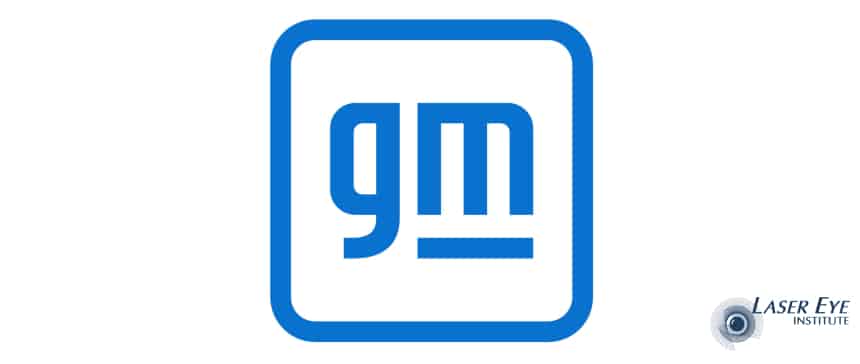LASIK Insurance Coverage for General Motors Employees
General Motors (GM) is one of the largest employers in Michigan, and many of its employees are curious about whether their health insurance covers LASIK. While we wish there was a simple answer, the reality is that coverage can vary based on your specific insurance plan, role within the company, and seniority level. From entry-level employees to executives, GM offers a wide range of health insurance options, each with different benefits.
Although some GM health plans may cover LASIK, the extent of that coverage depends on the plan you are enrolled in. To avoid any surprises, it’s important to gather all the necessary information and explore your specific coverage options.
How to Determine If Your General Motors Insurance Covers LASIK
We’ve created a step-by-step guide to help GM employees determine if their insurance covers LASIK. Start by gathering your insurance details and contacting your insurance provider to confirm what’s included under your plan.
Steps to Check for LASIK Coverage
1. Gather Your Insurance Information
Ensure you have your health insurance card available. You will need your group and policy numbers to ask about your LASIK coverage.
2. Know the LASIK CPT Code
Insurance companies use CPT codes to describe the services they cover. For LASIK, the CPT code is S0800. If you’re considering PRK, the code is S0810, and for SMILE, it’s 66999. Using these codes when communicating with your insurance provider will help clarify if the procedures are covered under your plan.
Does General Motors’ Health Insurance Cover LASIK?
Some GM employees may have insurance plans that offer partial or full LASIK coverage. However, to confirm if your specific plan includes this benefit, it’s best to check with multiple resources.
Ways to Check Your LASIK Coverage Options
Option 1: Contact GM’s Human Resources Department
A simple ways to determine whether your GM health insurance covers LASIK is by reaching out to the HR department. They can review your plan details and let you know if LASIK, PRK, or SMILE is covered. Additionally, GM employees might be eligible to use Health Savings Accounts (HSAs) or Flexible Spending Accounts (FSAs), which can be a great way to cover part of the costs of LASIK.
Option 2: Contact Your Insurance Provider Directly
You can also contact your insurance provider’s customer service team and ask if your plan covers LASIK or other vision correction procedures. Be sure to provide the CPT code S0800 when asking about LASIK. You will need to have your health insurance card handy when calling, as you’ll need to provide your group and policy numbers.
Option 3: Let Us Help You Figure Out Your LASIK Coverage
The easiest way to find out if your GM insurance plan covers LASIK is to schedule a complimentary consultation with the Laser Eye Institute. Our experienced LASIK coordinators will review your insurance benefits and help you understand what part of your LASIK, SMILE, or PRK procedure might be covered. If full coverage is not available, we can help you explore other options, such as 0% financing or using your HSA.
Key Laser Vision Correction Details for GM Employees
Before undergoing LASIK, there are a few important details to understand about the potential costs. Insurance plans that cover LASIK usually include the procedure itself and follow-up care for the first 90 days after surgery. However, any appointments or treatments needed beyond that may result in additional out-of-pocket costs.
It’s also worth noting that while some insurance plans cover older, blade-based procedures, the advanced bladeless LASIK technology offered at Laser Eye Institute may come with an additional “upgrade” charge. Understanding these details upfront will help you avoid unexpected costs.
Additionally, even if your insurance plan covers LASIK, you may still be responsible for deductibles or copays before the coverage applies. Confirm all costs with your provider before moving forward, so you have a clear picture of your financial responsibility.
Tips for Budgeting for LASIK
Pro Tip 1: Understand Your Cost-Share
Even if LASIK is a covered benefit under your GM health insurance plan, there may still be costs such as deductibles and copays to consider. When contacting your HR department or insurance provider, make sure to ask for clarification on any additional fees associated with the procedure.
Pro Tip 2: Check Your Vision Insurance Plan
In addition to your health insurance, you may have a separate vision insurance plan that offers LASIK benefits. These could include partial coverage, a discount plan, or pre-negotiated rates for the procedure. By combining these benefits with financing options, you can make LASIK more affordable with manageable monthly payments. Be sure to check your vision plan’s details.
Pro Tip 3: Schedule Your Complimentary Consultation
The easiest way to determine your LASIK coverage is by booking a free consultation with Laser Eye Institute. During this visit, bring your insurance card, and our team will check your benefits for you. We will provide a detailed estimate of your out-of-pocket costs and discuss financing options, if necessary.
At your consultation, we will walk you through the entire LASIK process—from the initial eye measurements to the creation of your personalized treatment plan. You’ll get a clear understanding of your vision correction options, as well as any insurance coverage available for the procedure.
Ready to See If LASIK Is Right for You?
If you’re ready to find out whether your General Motors health insurance covers LASIK, PRK, or SMILE, schedule your free consultation at Laser Eye Institute today. We’ll guide you through the process, help you determine your coverage, and ensure you have all the information you need to make a decision about improving your vision.
Share This Article
Posted by Dave Lemieux
David Lemieux, BA from Oakland University is a LASIK expert and marketing professional that has worked with Dr. Dan Haddad and the Laser Eye Institute since 2017. David believes in education and cutting through the noise to deliver facts and opinions about LASIK, SMILE, and all things Laser Vision Correction.
